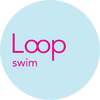Loop Co-founder, Heather Kaye, recently chatted with China Daily shedding light on the brand’s secret sauce and highlighting how our waste should be our biggest resource.
 Loop Co-founder, Heather Kaye at Ipanema Beach, Rio in October ’16
Loop Co-founder, Heather Kaye at Ipanema Beach, Rio in October ’16
Where does the recycled plastic used in the making Loop swimsuits come from?
To make our signature knit and woven swimwear fabrics, we purchase our REPREVE recycled PET yarn from the China branch of the American company, Unifi. They recycle bottles from China and our yarn is blended with Creora High-Clo Spandex which gives our knit fabrics long-lasting stretch even with salty ocean and chlorinated pool water.
We prefer to manufacture locally as much as possible, so all of our Asia, Australia and Middle East production is proudly – and beautifully – made in China.
How many plastic bottles does it take to make each swimsuit?
Ten plastic bottles can make one entire bikini, and 14 plastic bottles can make a sun protective shirt.
Are you aware of the newly implemented law on waste management in Shanghai? What’s your opinion of it?
Absolutely – from my children’s school to posters and campaigns across Shanghai, we were all anticipating the official sorting start date of July 1st! We are so excited to see this incredible level of commitment not only from the government and local authorities but from citizens wanting to use resources wisely and recycle wherever possible. Just the act of sorting our trash makes us so much more aware of how much waste each of us generates. Things we don’t think about – from take-away containers to straws and food packaging – it really adds up! We are now consuming ONE MILLION plastic bottles a minute globally – with only 9% of those bottles being recycled. We have an amazing opportunity in a big, super-organized city like Shanghai to get our recycling numbers up in the 90%+.
One of our most exciting messages as a company is that plastic is NOT waste! It’s so important to own that narrative and help show people that plastic is a valuable resource that can be recycled into all sorts of new products – from furniture to roads to apparel – and even swimwear. PET plastic bottles, once chopped up to flake form and melted down into pellets (nurdles), are essentially polyester. We save energy and water by recycling post-consumer use plastic bottles rather than fracking or digging for virgin oil or natural gas by-product.
It’s estimated that 80% of plastic ocean pollution starts on land – with us – and so managing our waste is crucial. Most people don’t realize that 70% of the oxygen we breathe comes from our oceans, not forests. It’s essential that we keep our waterways and oceans healthy for our own survival.
Do you see any more business opportunity in circular economy in China that related to trash-sorting?
Our mission as a company is to close the loop on waste by ensuring that our products never enter into the waste stream. We use recycled inputs (plastic bottles) for our fabric and we can recycle your swimsuit when you are done with it. We believe it’s time to shift responsibility for waste onto the people who make it. Designers, investors, producers have a huge role to play in thinking through what will happen to their products when people are done using them. It’s a huge burden on governments and societies to deal with exponentially increasing amounts of trash and we hope in the future that waste that cannot be recycled will be charged to producers.
We know China has studied recycling systems around the world before implementing the current plans, and is looking for ways to make recycling profitable for the private companies who will likely take it over. When waste has value, people see opportunities. Efficiently recycling textiles (the average urban adult throws away 36 kg in unwanted clothing each year), electronic waste, plastic, glass, metal and paper/cardboard will get us closer to industries thinking about how to design circular products that do not generate unnecessary waste.
China by some counts uses 60 million takeaway containers a day – and most have not been recycled in the past because they contained food scraps or oil. Working together with the F&B businesses to ensure that we don’t have this kind of inefficient waste but can still deliver the convenience many have come to count on will be an important problem to resolve. Still, even when more eco-friendly alternatives to plastic become available, we should always remember that reusing products as much as possible, not using any kind of disposables, is the way to PREVENT waste. Sorting and recycling are very important, but designing sustainable products and convincing people to use non-disposable products is the only way to stop the inevitable drain on resources. Businesses that build their model on this reality will be poised for future growth and success in ways that companies making money on the backs of others cleaning up their waste will not.
Read the full piece here.





